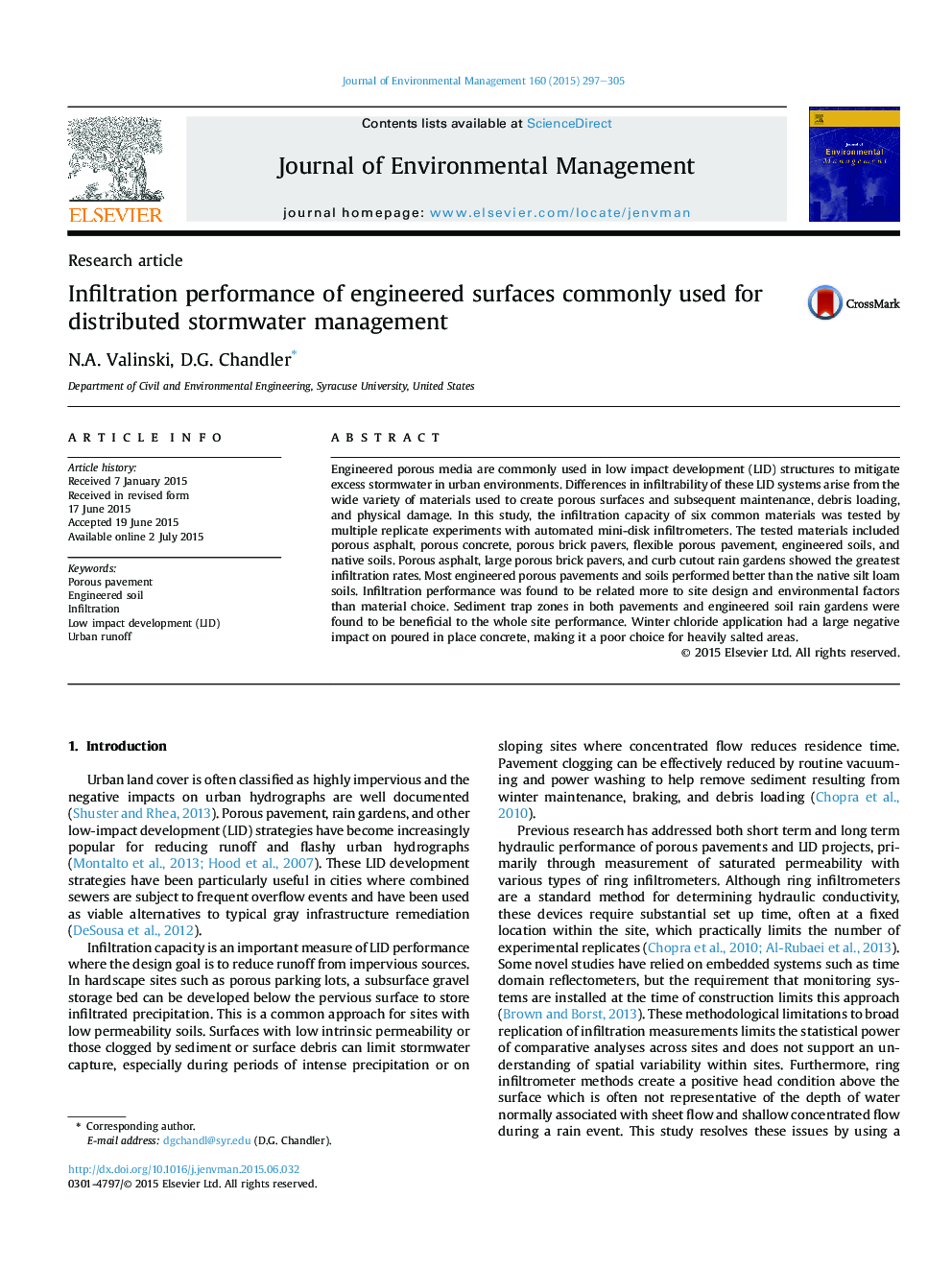| Article ID | Journal | Published Year | Pages | File Type |
|---|---|---|---|---|
| 7481905 | Journal of Environmental Management | 2015 | 9 Pages |
Abstract
Engineered porous media are commonly used in low impact development (LID) structures to mitigate excess stormwater in urban environments. Differences in infiltrability of these LID systems arise from the wide variety of materials used to create porous surfaces and subsequent maintenance, debris loading, and physical damage. In this study, the infiltration capacity of six common materials was tested by multiple replicate experiments with automated mini-disk infiltrometers. The tested materials included porous asphalt, porous concrete, porous brick pavers, flexible porous pavement, engineered soils, and native soils. Porous asphalt, large porous brick pavers, and curb cutout rain gardens showed the greatest infiltration rates. Most engineered porous pavements and soils performed better than the native silt loam soils. Infiltration performance was found to be related more to site design and environmental factors than material choice. Sediment trap zones in both pavements and engineered soil rain gardens were found to be beneficial to the whole site performance. Winter chloride application had a large negative impact on poured in place concrete, making it a poor choice for heavily salted areas.
Related Topics
Physical Sciences and Engineering
Energy
Renewable Energy, Sustainability and the Environment
Authors
N.A. Valinski, D.G. Chandler,
